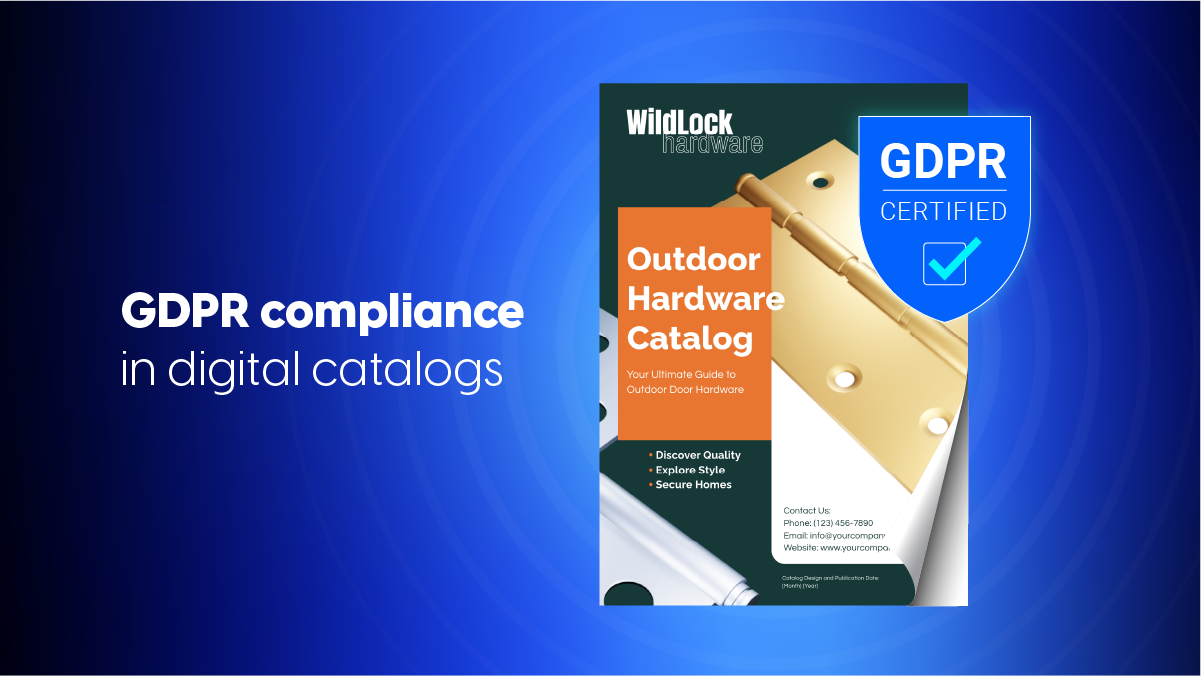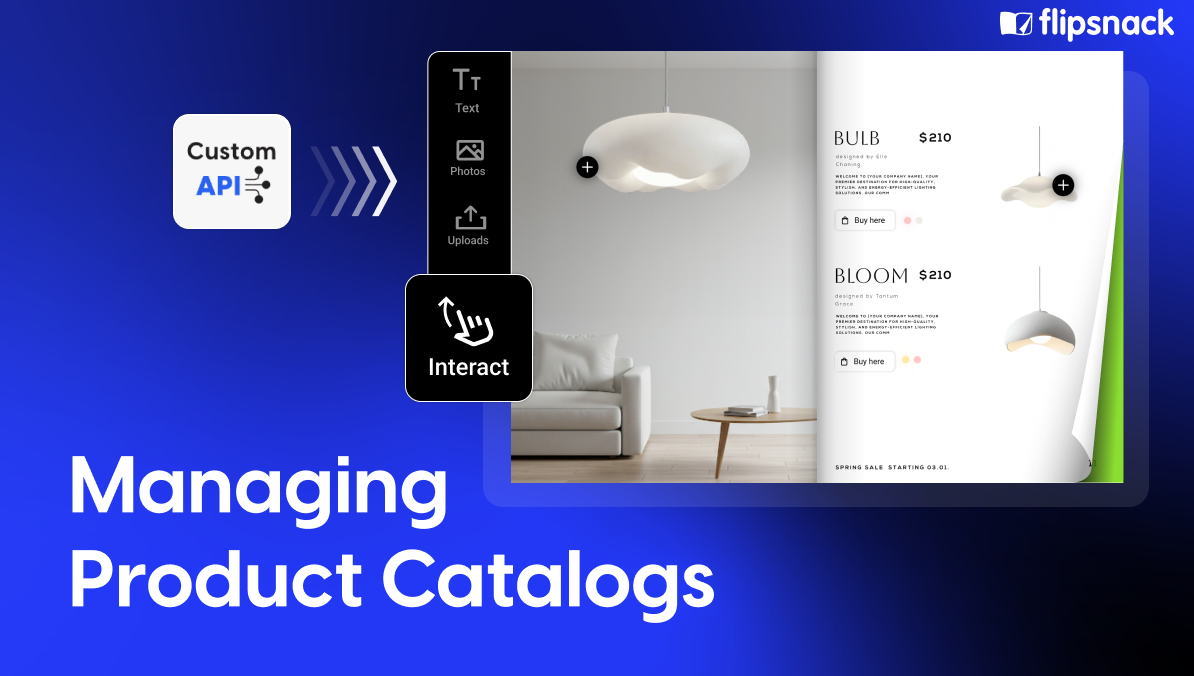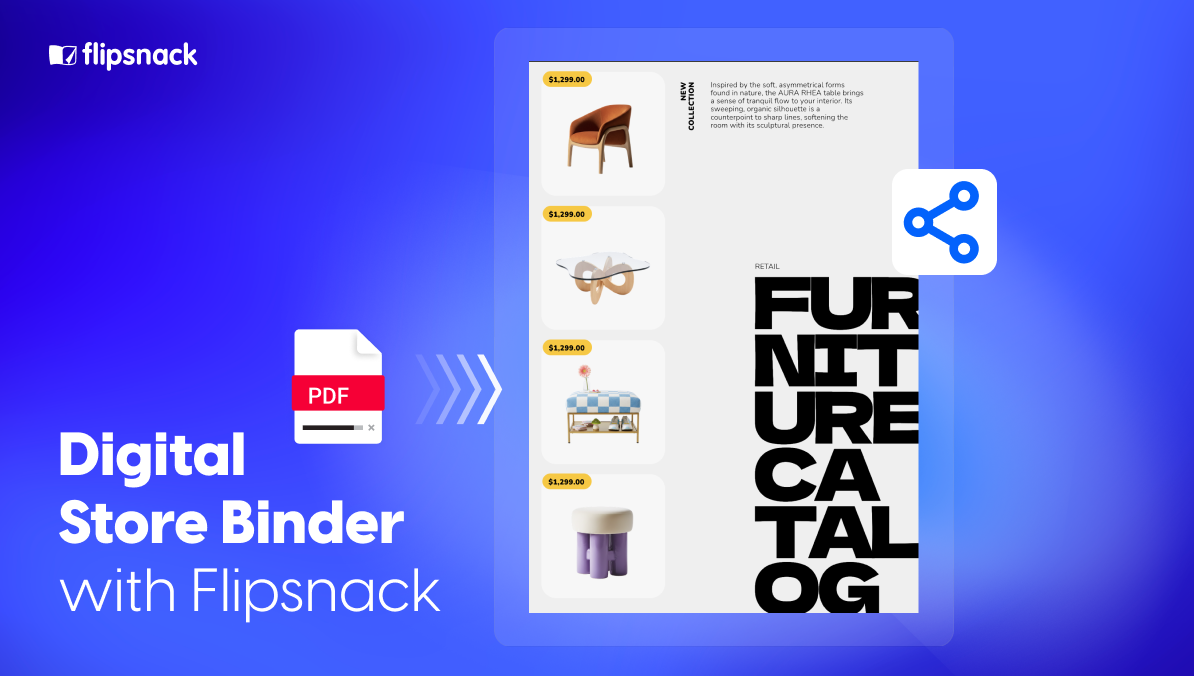Navigating GDPR compliance in digital catalogs
Have you ever received an email asking you to consent to a company’s privacy policy or terms of service? Those types of messages have become much more common since the General Data Protection Regulation (GDPR) went into effect in 2018.
GDPR is a big deal for any business that collects or processes personal data of EU citizens, including names, emails, locations, photos, purchases, and more. It aims to give people more control over their personal data and hold companies accountable for protecting it.
For digital marketers, especially those dealing with catalogs, GDPR compliance should be top of mind. In this article, we’ll break down the key aspects of GDPR as it relates to digital catalogs and marketing materials. You’ll walk away with a clear understanding of:
- The core concepts and goals behind GDPR
- How GDPR specifically impacts digital catalogs and marketing
- Steps to ensure your digital marketing strategies are GDPR-compliant
- Real-world examples of GDPR compliance in action
- Ongoing developments in the GDPR landscape
By the end, you’ll be well-equipped to integrate robust data protection into your digital marketing activities in alignment with GDPR. Let’s get started!
GDPR essentials for digital catalogs and marketing professionals
To navigate GDPR in any context, we first must understand its basic principles and purposes. Here’s an overview of key GDPR concepts and why they matter for your digital catalogs and materials.
Explaining GDPR: Key concepts and objectives
GDPR stands for General Data Protection Regulation and went into effect in the EU in May 2018, replacing the previous Data Protection Directive.
One of the most notable aspects of the GDPR is its expanded territorial scope. Unlike its predecessor, GDPR applies not just within the EU but to all companies processing EU citizens’ data, regardless of the company’s location. This global reach ensures that the data of EU citizens is protected worldwide.
The GDPR emphasizes the importance of informed consent. It stipulates that companies must receive clear and affirmative consent from individuals before processing their data. This is a departure from previous practices, as it renders pre-checked boxes on forms insufficient for obtaining consent.
A pivotal element of GDPR is empowering individuals with the right to access their data. This means that individuals can request details about the data a company holds on them and can have any inaccuracies corrected. Additionally, the ‘right to erasure,’ often referred to as the ‘right to be forgotten,’ allows individuals to request that their data be deleted from a company’s records.
Data protection is now a fundamental design feature. Companies must integrate data protection features from the ground up in their systems, utilizing techniques like pseudonymization and encryption. This approach ensures data protection is a core element of system design rather than an add-on.
In case of a data breach, companies must report breaches to the relevant authorities within 72 hours of discovery. Thus, GDPR emphasizes timely response and transparency.
GDPR also introduced enhanced enforcement measures, with companies facing fines of up to 4% of their global turnover for violations. This significant financial risk has propelled data protection to the forefront of corporate priorities.
Specific GDPR requirements impacting digital marketing and catalogs
The General Data Protection Regulation (GDPR) has reshaped digital marketing, especially for anyone conducting mass email campaigns, creating online catalogs, and doing lead generation. Comprehending and complying with GDPR is essential for maintaining customer trust and avoiding penalties.
Consent and data processing are two main areas GDPR affects, as outlined in Articles 5 and 7. Consent for data collection must be explicit, freely given, specific, informed, and unambiguous. This change is particularly relevant for digital marketers collecting emails for catalog mailing lists and other marketing activities. An active opt-in method is now required, shifting away from previous practices like pre-ticked boxes or implied consent. Moreover, data processing under GDPR must adhere to principles of lawful, fair, and transparent handling, ensuring that data is collected for specified purposes and kept no longer than necessary.
Transparency in data handling is further emphasized under Article 13, pertaining to privacy notices. It’s essential for your privacy policy to clearly explain how you collect, use, and store data. For digital catalogs, this means articulating the specifics of user information management, including how long data is retained.
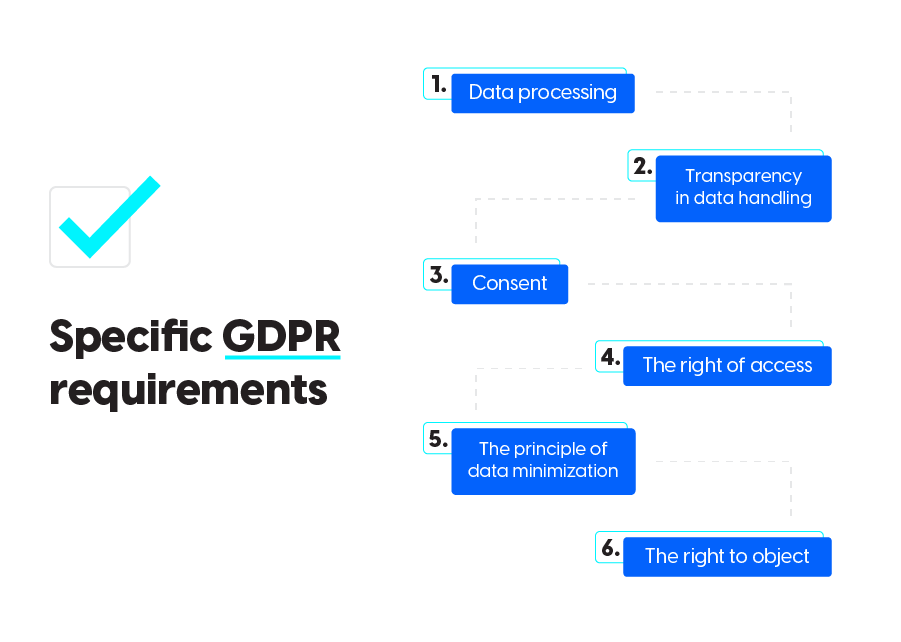
Key legal rights under GDPR: Access, objection, and minimization
The right of access and the principle of data minimization are also critical components of GDPR. Individuals now have the right to access their data, such as viewing their purchase history or preferences in your catalog. This data should be provided in a portable and accessible format. At the same time, GDPR encourages data minimization, urging you to collect only the essential data and to delete it when it’s no longer needed. For instance, purging data from users who have not interacted with your catalog for an extended period might be prudent.
Article 21 of GDPR introduces the right to object, allowing users to opt out of data processing at any time, including for direct marketing purposes. Consequently, your emails and catalogs must include clear and straightforward opt-out mechanisms.
Lastly, if you’re utilizing third-party services like contact centers for data processing, it’s imperative to ensure that compliant contracts are in place. These agreements must outline how the third parties handle data and affirm their compliance with GDPR standards.
By integrating these GDPR principles into your digital marketing strategies and catalog management, you comply with regulations and foster trust and transparency with your audience, enhancing your brand’s reputation and customer loyalty.
Navigating data collection and privacy in digital catalogs
Digital catalogs, a staple in modern marketing strategies, bring unique challenges in the context of the General Data Protection Regulation (GDPR). Navigating these challenges involves carefully evaluating each aspect of catalog operations and marketing workflows, always keen on compliance and respect for customer privacy.
When collecting emails or other data necessary for delivering your digital catalogs, it’s essential to adhere to a principle of minimalism. Ask only for the necessary information and avoid including unnecessary fields on opt-in forms. This approach not only aligns with GDPR’s data minimization principle but also respects your customers’ time and privacy.
The process of catalog delivery also warrants close attention. Minimize the data shared with delivery vendors, and anonymize information wherever possible to protect customer identities. Furthermore, ensure that any vendors involved have GDPR-compliant contracts, safeguarding the data at every stage.
Lead generation and nurturing, critical components of digital marketing, must be handled with an added layer of caution under GDPR. Confirm opt-in consent before adding prospects to any nurture workflows, such as catalog drip campaigns. Equally important is providing a straightforward way for users to unsubscribe, respecting their right to opt out at any time.
Using analytics responsibly and strategically
Analytics plays a vital role in understanding the effectiveness of your catalogs, but GDPR impacts how you handle data here too. Avoid storing personal information longer than necessary for your reporting purposes. More critically, do not share analytics data with third parties without explicit consent from the individuals whose data is being analyzed.
Incorporating third-party data, such as lookalike audiences, demands a rigorous compliance check. Ensure that all necessary consents are in place and that the use of such data aligns with GDPR guidelines. It’s a delicate balance between leveraging data for business insights and respecting individual privacy rights.
Lastly, transparency is key, and this is where your privacy policy comes into play. It should clearly and specifically explain how data for your digital catalog is collected, processed, shared, and secured. A comprehensive, easy-to-understand privacy policy not only meets GDPR requirements but also builds trust with your audience. Check out this practical privacy policy template to create your own.
Essentially, GDPR compliance as it relates to digital catalogs is about putting yourself in your customers’ shoes. Assess each step of your process to understand what might feel invasive versus what is respectful and transparent. By doing so, you create a digital environment that respects privacy while still achieving your marketing goals.
Practical strategies for ensuring GDPR compliance
We’ve covered the GDPR fundamentals and how they apply to digital marketing. Now let’s get practical.
Best practices for data protection in digital marketing
Here are tips and steps you can implement to help ensure your digital catalogs and marketing materials meet GDPR requirements:
- Conduct regular GDPR gap analysis on marketing practices and digital channels – email, websites, landing pages and forms. Identify areas for improvement.
- Develop granular consent flows: Separate consent for general marketing, catalog delivery, email nurturing and sharing data with third parties.
- Update policies and contracts: Privacy policy, processor agreements, third-party terms. Review annually.
- Follow privacy and data minimization by design principles when selecting marketing tools and technologies. Opt for privacy-centric options.
- Anonymize collected data where possible. Never collect or store more data than needed.
- Make unsubscribes, consent withdrawals, data access requests easy. Monitor and comply promptly.
- Train marketing team members on GDPR requirements, with guidance on privacy-focused data practices.
Creating GDPR-compliant digital catalogs: A step-by-step guide
- Review data needs: What subscriber data do you truly require to deliver your catalog successfully? Collect only necessary data.
- Craft compliant opt-in forms: Use specific opt-in checkboxes for each type of consent, like email sends and data sharing. Don’t use pre-checked boxes.
- Update privacy policy: Add a section explaining specifically how you collect, use, share, and protect catalog subscriber data.
- Ensure easy unsubscription: Include visible unsubscribe links in catalogs and associated emails so readers can easily opt out.
- Get delivery vendor GDPR assurances: Work with your catalog delivery vendors and providers to ensure they are GDPR-compliant through contracts and data protection measures.
- Limit analytics data: Carefully evaluate analytics collected on your catalog. Avoid storing personal data beyond what’s needed for reports.
- Respect data access requests: Be prepared to provide catalog subscriber details if requested or delete data if the right to erasure is invoked. Respond promptly.
- Review and refine regularly: Audit your catalog practices every 6 months to identify additional ways to safeguard data and respect reader privacy.
Utilizing tools and software for GDPR compliance
Specialized consent tools and software platforms can streamline areas of GDPR compliance for digital marketers. These technologies both streamline compliance and also enhance efficiency in handling data.
Consent management platforms have become indispensable in managing granular consent preferences. These platforms facilitate the intricate opt-in and opt-out flows required for email campaigns, digital catalogs, and other marketing channels. By automating consent management, they ensure compliance while providing a user-friendly experience for customers. For businesses with advanced customization or regional compliance needs, exploring CookieYes alternatives offers more control over consent workflows and data storage practices.
Many CMPs now include built-in integrations with Google Consent Mode v2, automatically adjusting your Google tags based on each user’s consent choices. Before you begin collecting analytics or running remarketing campaigns, be sure to check if Consent Mode is correctly enabled. It will ensure that when consent is denied, no personal identifiers are captured and all data remains anonymized. Proper Consent Mode setup ensures you stay GDPR‑compliant by only gathering aggregated insights and preventing unauthorized data transfers.
Data discovery tools are another critical asset. They automatically scan and classify personal data across various repositories, such as marketing databases, digital catalogs, and web analytics platforms. This simplification is key to understanding and managing the scope of data held, a crucial step in GDPR compliance.
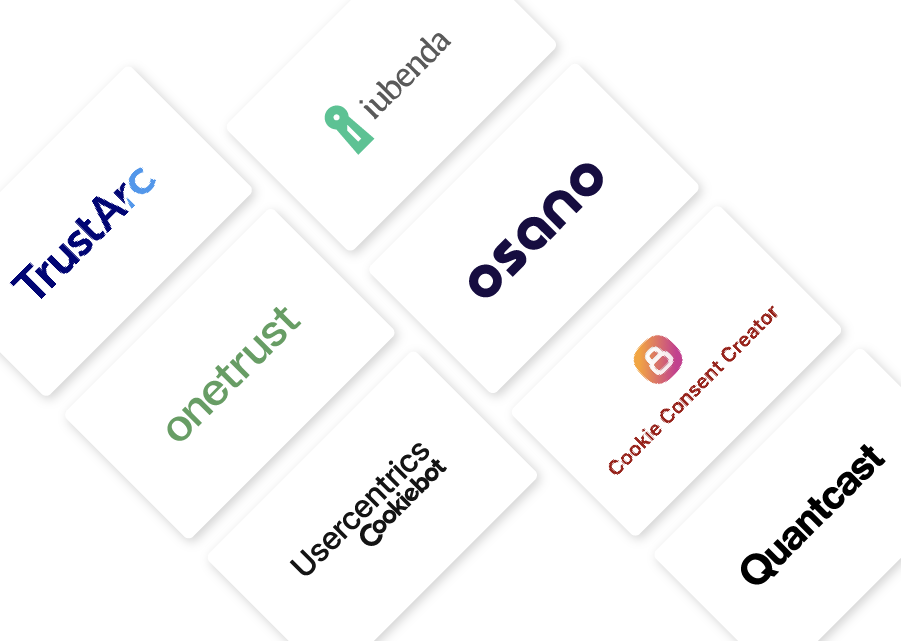
The role of anonymization and data portability tools
Anonymization tools play a dual role: they allow the irreversible anonymization of collected data or mask personal details. This functionality is vital for marketers leveraging data analytics while upholding individual privacy. By anonymizing or masking data, these tools enable broader usage of customer information without compromising privacy. In this context, data lake consulting can play a pivotal role by helping organizations structure and manage vast, unstructured data sets in a way that supports anonymization strategies and privacy compliance.
DPA (Data Protection Addendum) mapping tools are essential for cataloging processes and flows involving personal data. They help maintain a clear record for transparency, a requirement under GDPR’s data protection by design principle. This aids not just in compliance but also in building customer trust by demonstrating a commitment to data security.
Data portability tools are necessary to fulfill GDPR’s right of access. They enable the easy export of subscriber or customer data in a reusable format upon request. This aligns with the GDPR mandate, ensuring that individuals can readily access their data in a convenient and secure manner.
Finally, breach notification tools are crucial for promptly informing authorities and impacted individuals of a personal data breach. This rapid response is not only a GDPR requirement but also a critical aspect of crisis management in digital marketing.
Staying updated with GDPR
Like any complex regulation, GDPR will continue to develop through new guidance, precedents, and enforcement actions. You must stay on top of the latest GDPR updates to keep your digital marketing compliant.
The landscape of GDPR is constantly evolving, driven by new guidance, legal precedents, and enforcement actions. As a digital marketer, it’s essential to stay abreast of these changes to ensure ongoing compliance.
Monitoring changes and updates in GDPR regulations
The key to staying updated with GDPR is actively monitoring its developments. Bookmarking key GDPR resources, such as the official EU portal and your national Data Protection Authority’s website, is a good start. These sites are treasure troves of information, offering the latest rulings, breach notifications, and regulatory updates.
Beyond official sources, subscribing to law firm email updates, GDPR-focused newsletters, and joining privacy professional forums can provide valuable insights. These platforms often break down complex legal jargon into more digestible advice and interpretations.
Social media platforms like LinkedIn and Twitter are useful for following GDPR thought leaders. Their perspectives on the evolution of GDPR can give you a broader understanding of its impact on digital marketing. Additionally, setting a calendar reminder to search for the latest on GDPR every three months can keep you informed of relevant developments.
Regarding practical application, resources like Termly’s GDPR tracker can be indispensable. Before reviewing your contracts or marketing practices, checking such sites for new requirements ensures that your operations remain compliant.
Preparing for Future GDPR Amendments in Digital Marketing
Looking forward, certain trends in GDPR amendments are becoming apparent. Preparing for these anticipated changes is crucial:
1. Expanded data rights
The trend towards expanded data rights, like enhanced data portability between services, necessitates that your systems can export subscriber data efficiently and securely.
2. Increased data protection for minors
Expect stricter regulations around data pertaining to minors. Anonymous analytics could become mandatory for sites targeting or frequented by this demographic.
3. Guidance on third-party cookies and online consent
As scrutiny around third-party cookies, mobile tracking, and online consent flows intensifies, it’s prudent to regularly evaluate your practices against emerging draft regulations.
4. Adjustments in breach notification and penalties
Stay prepared for potential adjustments in breach notification timeframes and fine structures. Having streamlined reporting workflows and contingency funds ready is advisable.
5. Learning from non-compliance examples
Observing and learning from examples of GDPR non-compliance can inform and refine your risk analysis processes.
While the specifics of these amendments will continue to evolve, the overarching direction is clear – a move towards greater consumer control and increased organizational accountability. Keeping this ethos at the center of your GDPR tracking efforts will not only ensure compliance but also help in building a more privacy-conscious digital marketing strategy.
Integrating GDPR compliance into your marketing strategy
Thanks for sticking with me through this in-depth look at achieving GDPR compliance for digital catalogs and marketing materials!
Here are the key takeaways:
- GDPR creates important new privacy rights and requirements that digital marketers must respect. Non-compliance risks hefty fines.
- Consent, transparency, data minimization, and access principles must be built into each stage of digital marketing workflows from data collection to analytics.
- Look to examples from brands effectively navigating GDPR for proven tips and strategies you can adopt across website forms, email campaigns, digital catalogs, and more.
- Monitor regulatory updates through news sites, legal guidance, and privacy professionals to ensure your practices evolve alongside any GDPR amendments.
While GDPR prompts major changes, it also delivers benefits. Following these best practices helps you earn your audience’s trust through exemplary data stewardship. That builds loyalty and engagement over the long term.
We hope that after reading our article, you feel better equipped to keep your digital marketing stacks, including any digital catalogs, aligned with this landmark privacy regulation. Please reach out if you have any other questions on successfully navigating GDPR compliance!
Using Flipsnack as your GDPR compliant marketing tool
Flipsnack is more than a publishing tool, allowing you to create marketing materials such as digital catalogs, brochures, or flyers that are GDPR compliant. Flipsnack is committed to protecting your clients’ data and to secure every piece of information and data that you share with us. To translate this into practice, when you add a lead form to your catalog or other marketing materials, you have the option to add two different checkboxes of security.
The first checkbox represents the Privacy policy that your company has, allowing the readers to see how you collect and use their data. And the second checkbox pertains to our focus in today’s article: GDPR. The option to include a GDPR compliance check ensures that your readers give their consent for the use of their information. The message can be personalized, and it is not mandatory for users to check the box in order to submit the lead form.

This is just one (visible example) of the various ways in which Flipsnack adheres to the latest GDPR regulations, making it easier for you, as a marketer, to handle client data properly. Start today, making your journey to GDPR compliance as smooth and as effortless as possible.
GDPR compliance FAQs
GDPR grants EU individuals several key rights, including the right to access their data, correct inaccuracies, delete data, object to processing, and port data to other services. Enabling these rights in your digital marketing systems is required for compliance.
Yes, GDPR applies extraterritorially to all organizations processing EU citizens’ personal data, regardless of the company’s location. Many non-EU companies have implemented GDPR compliance measures given this expansive applicability.
GDPR provides for steep fines up to 4% of a company’s global annual revenue or €20 million, whichever is greater. Non-compliance based on lack of transparency or invalid consent tends to draw the most severe penalties.
There is no fixed timeline required in GDPR itself, but authorities generally recommend seeking renewed consent every 12-36 months. More frequent refreshes may be advisable for certain data uses seen as higher risk from a privacy perspective.
Yes, GDPR does not apply to aggregated, anonymized data where individuals are no longer identifiable. However, companies must carefully validate that their anonymization techniques are robust enough to fully de-identify individuals.
